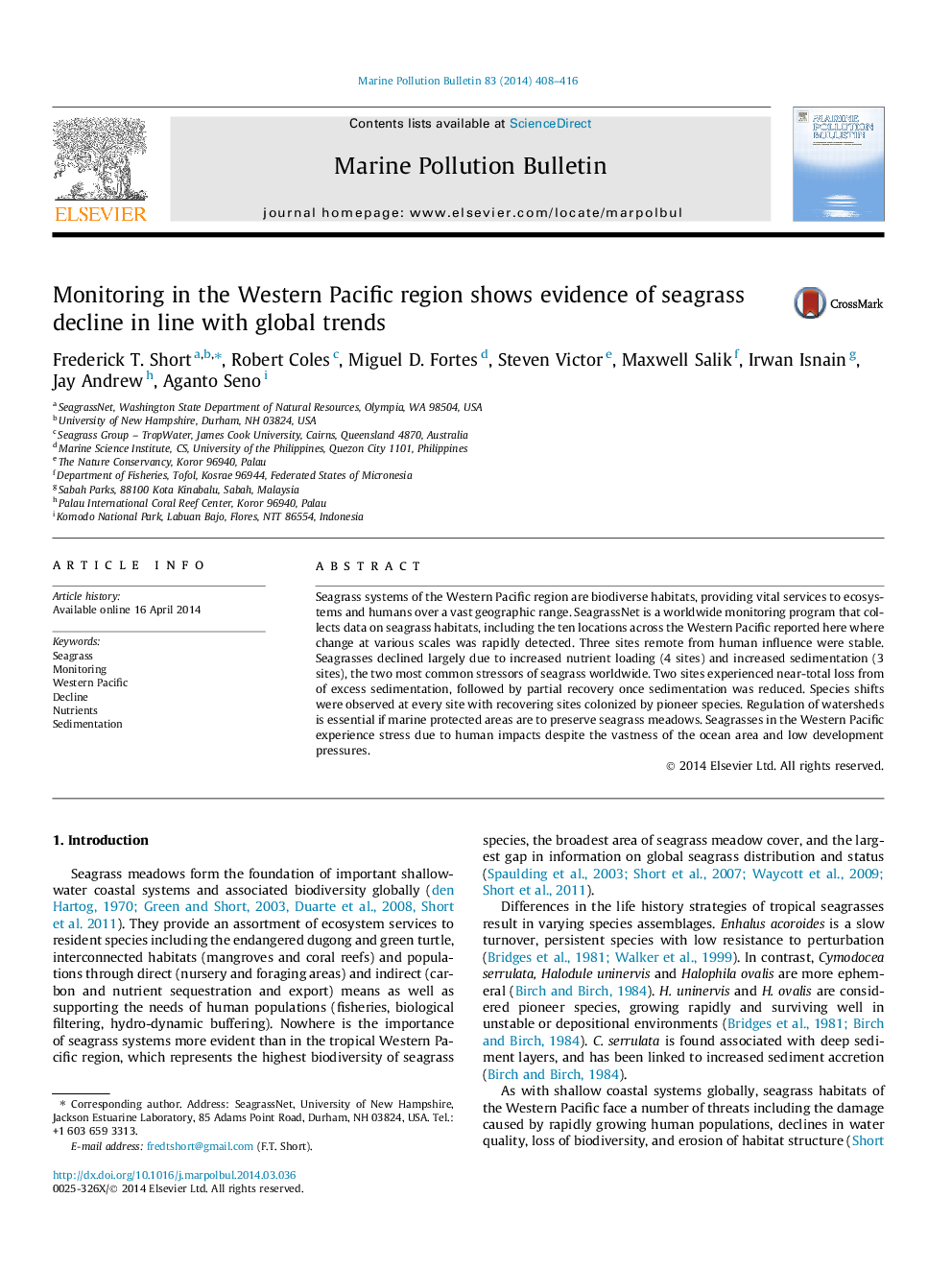| Article ID | Journal | Published Year | Pages | File Type |
|---|---|---|---|---|
| 6358122 | Marine Pollution Bulletin | 2014 | 9 Pages |
â¢A decade of monitoring 10 sites shows change in Western Pacific seagrasses.â¢Seagrass declined at 7 of 10 sites, mainly due to nutrient loading and sedimentation.â¢Species shifts were observed and 2 sites recovered with pioneering seagrass species.â¢Seagrass trends similar to developed areas: declines outweigh stable systems.â¢Even in such remote locations, small impacts create significant seagrass declines.
Seagrass systems of the Western Pacific region are biodiverse habitats, providing vital services to ecosystems and humans over a vast geographic range. SeagrassNet is a worldwide monitoring program that collects data on seagrass habitats, including the ten locations across the Western Pacific reported here where change at various scales was rapidly detected. Three sites remote from human influence were stable. Seagrasses declined largely due to increased nutrient loading (4 sites) and increased sedimentation (3 sites), the two most common stressors of seagrass worldwide. Two sites experienced near-total loss from of excess sedimentation, followed by partial recovery once sedimentation was reduced. Species shifts were observed at every site with recovering sites colonized by pioneer species. Regulation of watersheds is essential if marine protected areas are to preserve seagrass meadows. Seagrasses in the Western Pacific experience stress due to human impacts despite the vastness of the ocean area and low development pressures.
